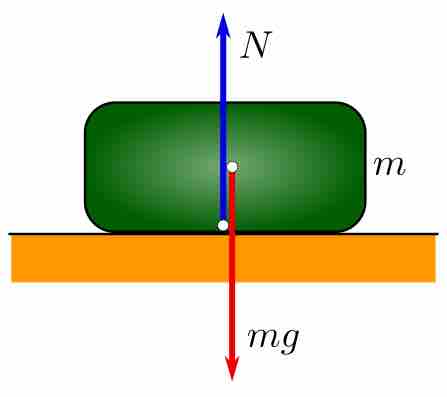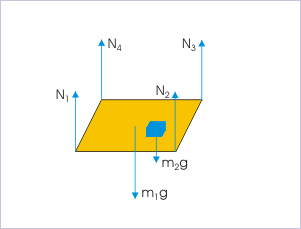We are surrounded by great engineering architectures and mechanical devices, which are at rest in the frame of reference of Earth. A large part of engineering creations are static objects. Yet we also seek equilibrium of moving objects like that of floating ship, airplane cruising at high speed, and such other moving mechanical devices. In both cases – static or dynamic – net external forces and torques are zero.
A body is said to be in mechanical equilibrium when net external force is equal to zero and net external torque is also zero. Mathematically,
Since there is no net force on the object, the object does not accelerate. This implies two types of possible equilibrium. The first type, where all particles in the system are at rest and do have not velocity, is known as static equilibrium. In the second type, the object has a velocity, but since there are no net forces acting on it, the velocity remains constant. In the second case, the particle is said to be in dynamic equilibrium. Static or dynamic, these kinds of equilibrium can be categorized as translational equilibrium.
Examples of translational equilibrium are all around us. A book resting on a table is pushing down on the table with the force of its weight . The table, in turn, is pushing back on the book, keeping the book from falling through the table. Since neither the table nor the book are moving, this is an example of static equilibrium. The force of gravity on the book is perfectly counteracted by the force of the table pushing on it.

Forces Acting on an Object at Rest
A force diagram showing the forces acting on an object at rest on a surface. Notice that the amount of force that the table is pushing upward on the object (the N vector) is equal to the downward force of the object's weight (shown here as mg, as weight is equal to the object's mass multiplied by the acceleration due to gravity): because these forces are equal, the object is in a state of equilibrium (all the forces acting on it balance to zero).
An example of dynamic (or mechanical) equilibrium is an object sliding down a wedge. The force of gravity pulls the object down the wedge, but it is counteracted by the force of friction between the wedge and the object. If the force of friction is equal to the force of gravity, the object will proceed at a constant velocity.

Forces on a Table
These six forces are in equilibrium. The four forces of the table leg counteract the force of the table and the object pushing on them.